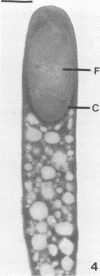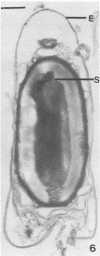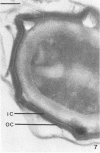Abstract
A defined minimal sporulation medium for Clostridium acetobutylicum P262, which produces high levels of solvents, is described. The overall sporulation sequence was similar to that of other endospore-forming bacteria. However, we observed a presporulation stage, during which swollen phase-bright cells which contained large amounts of granulose formed. During sporulation, the initiation of spore coat formation occurred before the onset of cortex formation. Other Clostridium strains tested showed marked variations in ability to grow and sporulate in various minimal media.
Full text
PDF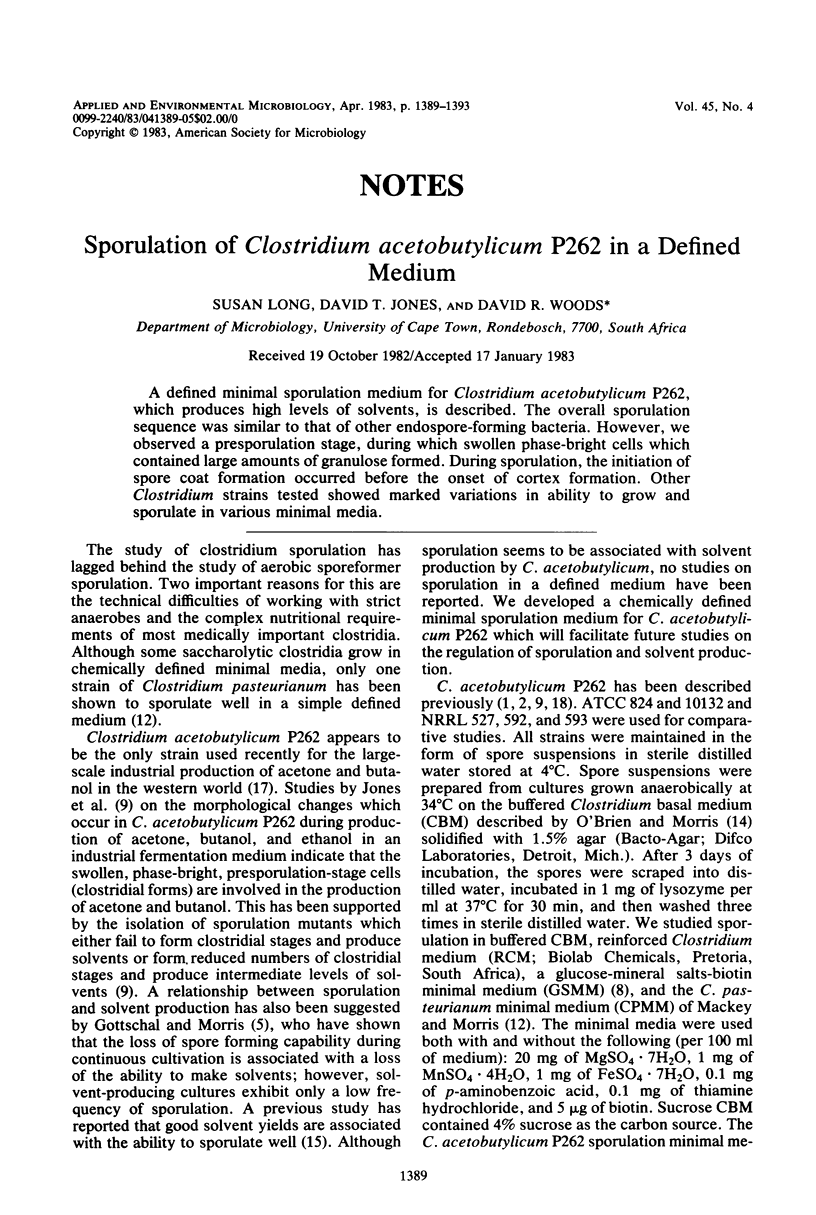
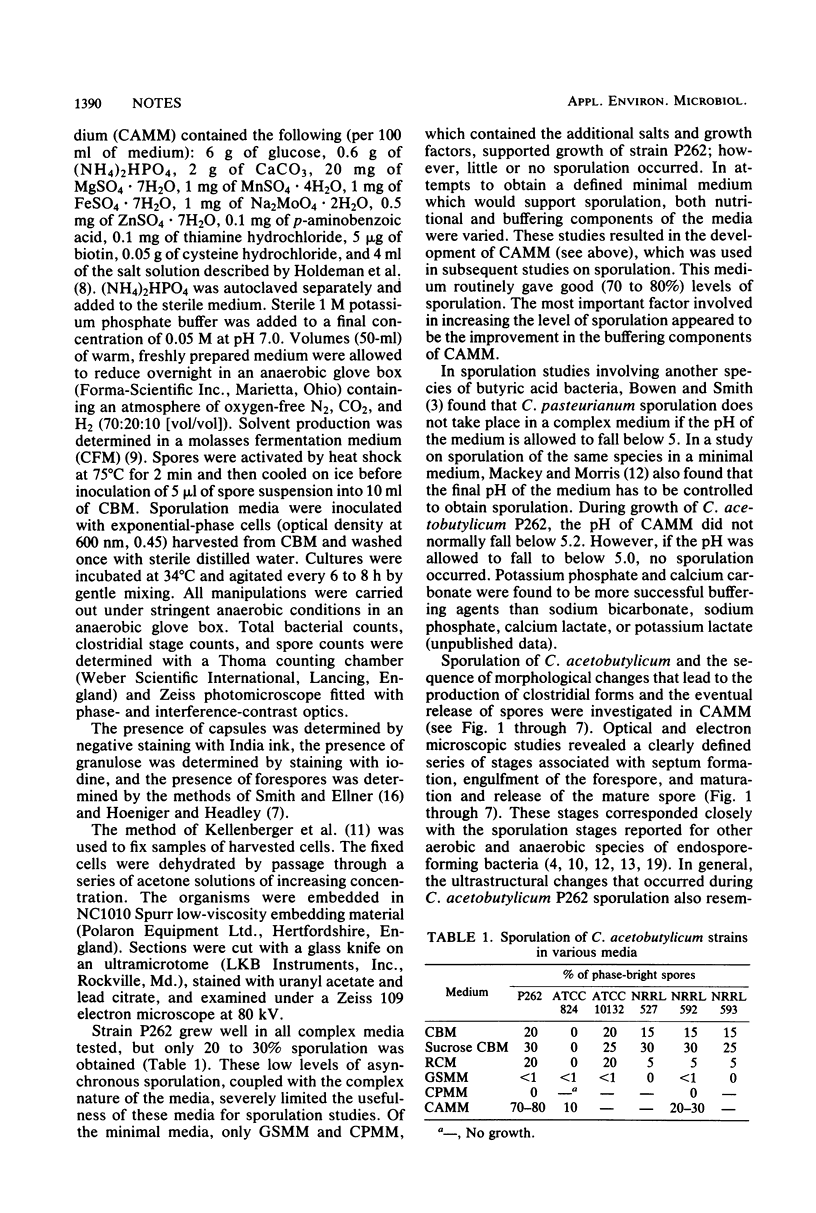



Images in this article
Selected References
These references are in PubMed. This may not be the complete list of references from this article.
- Allcock E. R., Reid S. J., Jones D. T., Woods D. R. Autolytic Activity and an Autolysis-Deficient Mutant of Clostridium acetobutylicum. Appl Environ Microbiol. 1981 Dec;42(6):929–935. doi: 10.1128/aem.42.6.929-935.1981. [DOI] [PMC free article] [PubMed] [Google Scholar]
- Barber J. M., Robb F. T., Webster J. R., Woods D. R. Bacteriocin production by Clostridium acetobutylicum in an industrial fermentation process. Appl Environ Microbiol. 1979 Mar;37(3):433–437. doi: 10.1128/aem.37.3.433-437.1979. [DOI] [PMC free article] [PubMed] [Google Scholar]
- Hoeniger J. F., Headley C. L. Cytology of spore germination in Clostridium pectinovorum. J Bacteriol. 1968 Nov;96(5):1835–1847. doi: 10.1128/jb.96.5.1835-1847.1968. [DOI] [PMC free article] [PubMed] [Google Scholar]
- Jones D. T., van der Westhuizen A., Long S., Allcock E. R., Reid S. J., Woods D. R. Solvent Production and Morphological Changes in Clostridium acetobutylicum. Appl Environ Microbiol. 1982 Jun;43(6):1434–1439. doi: 10.1128/aem.43.6.1434-1439.1982. [DOI] [PMC free article] [PubMed] [Google Scholar]
- KELLENBERGER E., RYTER A., SECHAUD J. Electron microscope study of DNA-containing plasms. II. Vegetative and mature phage DNA as compared with normal bacterial nucleoids in different physiological states. J Biophys Biochem Cytol. 1958 Nov 25;4(6):671–678. doi: 10.1083/jcb.4.6.671. [DOI] [PMC free article] [PubMed] [Google Scholar]
- Kay D., Warren S. C. Sporulation in Bacillus subtilis. Morphological changes. Biochem J. 1968 Oct;109(5):819–824. doi: 10.1042/bj1090819. [DOI] [PMC free article] [PubMed] [Google Scholar]
- O'Brien R. W., Morris J. G. Oxygen and the growth and metabolism of Clostridium acetobutylicum. J Gen Microbiol. 1971 Nov;68(3):307–318. doi: 10.1099/00221287-68-3-307. [DOI] [PubMed] [Google Scholar]
- SMITH A. G., ELLNER P. D. Cytological observations on the sporulation process of Clostridium perfringens. J Bacteriol. 1957 Jan;73(1):1–7. doi: 10.1002/path.1700730102. [DOI] [PMC free article] [PubMed] [Google Scholar]
- Webster J. R., Reid S. J., Jones D. T., Woods D. R. Purification and Characterization of an Autolysin from Clostridium acetobutylicum. Appl Environ Microbiol. 1981 Feb;41(2):371–374. doi: 10.1128/aem.41.2.371-374.1981. [DOI] [PMC free article] [PubMed] [Google Scholar]
- Young M., Mandelstam J. Early events during bacterial endospore formation. Adv Microb Physiol. 1979;20:103-62, 321-3. doi: 10.1016/s0065-2911(08)60207-6. [DOI] [PubMed] [Google Scholar]






